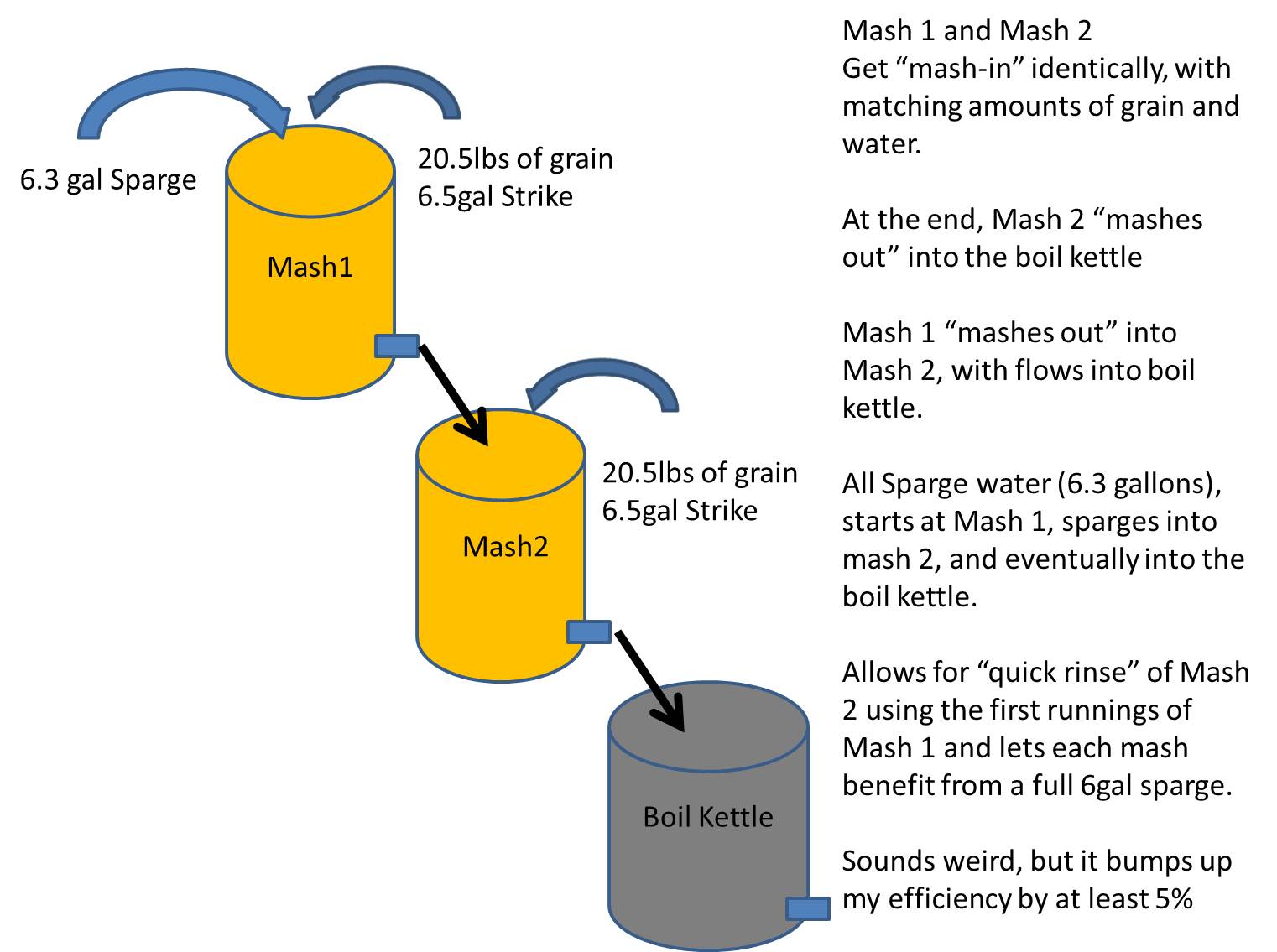StopTakingMyUsername
Well-Known Member
- Joined
- Sep 12, 2015
- Messages
- 114
- Reaction score
- 6
Did some searching and couldn't find a thread on this from HBT.
I'm trying to create maximum viscosity... something like Huna/Zhukov, Dark Lord, or Ten Fidy.
Not just using oats to give a little enhancement of mouthfeel... I'm talking straight up sludge in a glass.
I've been researching this a lot and came up with a few things. Curious as to people's feedback and suggestions.
- "Double mash" is essentially just using ONLY the 1st runnings off of two separate mashes, to hit target volume in the BK, right? I believe this is what the examples I listed above all do. Correct me if I'm wrong.
- High amounts of nonfermentables to build up the FG
- High amounts of Roasted Barley for mouthfeel (Is it roasted barley, or flaked barley? If flaked, does this require special mashing?) - I am not sure if this is correct, but I remember reading that the Barley gives MORE mouthfeel than rye or oats (which could also be added)
- Mash higher than usual, 154+ F. I get the concept of making longer chain sugars, but if a large % of the grist is nonfermentable anyway, will this matter?
- High FG. 1.030 as a minimum. I believe Dark Lord is 1.060+ but that may be a bit much.
- 2-3 hour boil? Increased flavor complexity from maillard reactions? Consistency changes with long reduction of wort?
I've also heard from a brewer friend that a lot of commercial breweries just use DME for this. I'm not sure if he meant MOUTHFEEL or ABV specifically, though. Would DME help mouthfeel?
Will these get someone in the ballpark of the same viscosity as the examples I listed? I know that's a lofty goal, but I think it is definitely possible to dial in.
Can provide some base recipes if needed... I've mostly been looking at Ten Fidy, Dark Lord, and Kentucky Dark Star recipes, although, admittedly KDS isn't as thick as I'd like.
Thoughts?
Suggestions?
I'm trying to create maximum viscosity... something like Huna/Zhukov, Dark Lord, or Ten Fidy.
Not just using oats to give a little enhancement of mouthfeel... I'm talking straight up sludge in a glass.
I've been researching this a lot and came up with a few things. Curious as to people's feedback and suggestions.
- "Double mash" is essentially just using ONLY the 1st runnings off of two separate mashes, to hit target volume in the BK, right? I believe this is what the examples I listed above all do. Correct me if I'm wrong.
- High amounts of nonfermentables to build up the FG
- High amounts of Roasted Barley for mouthfeel (Is it roasted barley, or flaked barley? If flaked, does this require special mashing?) - I am not sure if this is correct, but I remember reading that the Barley gives MORE mouthfeel than rye or oats (which could also be added)
- Mash higher than usual, 154+ F. I get the concept of making longer chain sugars, but if a large % of the grist is nonfermentable anyway, will this matter?
- High FG. 1.030 as a minimum. I believe Dark Lord is 1.060+ but that may be a bit much.
- 2-3 hour boil? Increased flavor complexity from maillard reactions? Consistency changes with long reduction of wort?
I've also heard from a brewer friend that a lot of commercial breweries just use DME for this. I'm not sure if he meant MOUTHFEEL or ABV specifically, though. Would DME help mouthfeel?
Will these get someone in the ballpark of the same viscosity as the examples I listed? I know that's a lofty goal, but I think it is definitely possible to dial in.
Can provide some base recipes if needed... I've mostly been looking at Ten Fidy, Dark Lord, and Kentucky Dark Star recipes, although, admittedly KDS isn't as thick as I'd like.
Thoughts?
Suggestions?


















![Craft A Brew - Safale S-04 Dry Yeast - Fermentis - English Ale Dry Yeast - For English and American Ales and Hard Apple Ciders - Ingredients for Home Brewing - Beer Making Supplies - [1 Pack]](https://m.media-amazon.com/images/I/41fVGNh6JfL._SL500_.jpg)







































